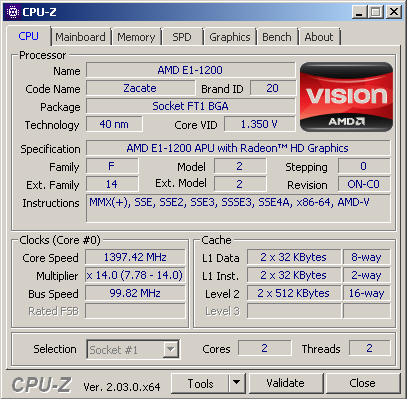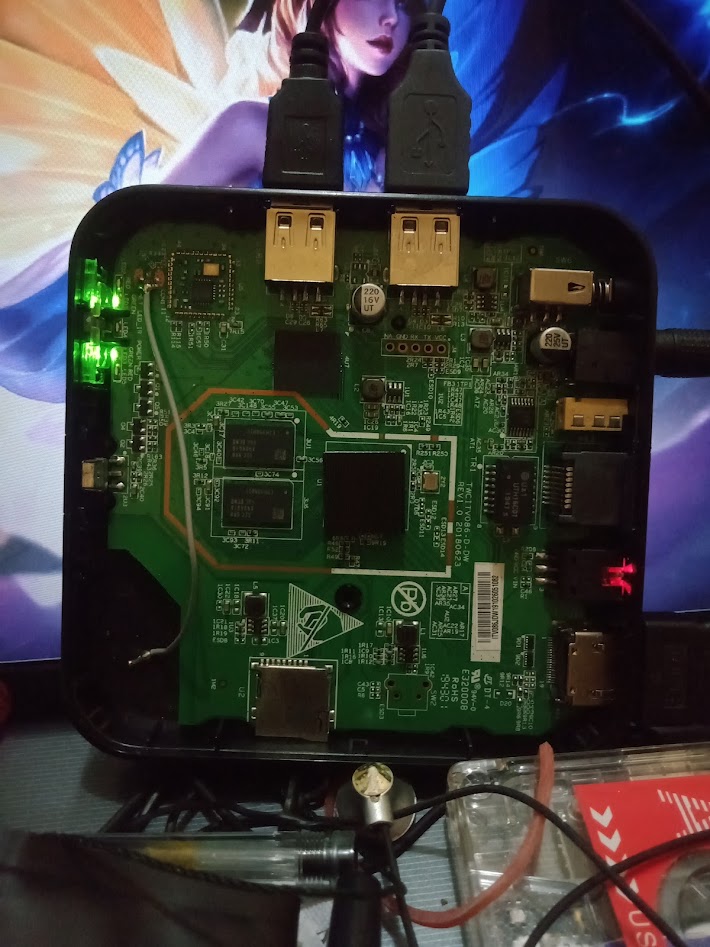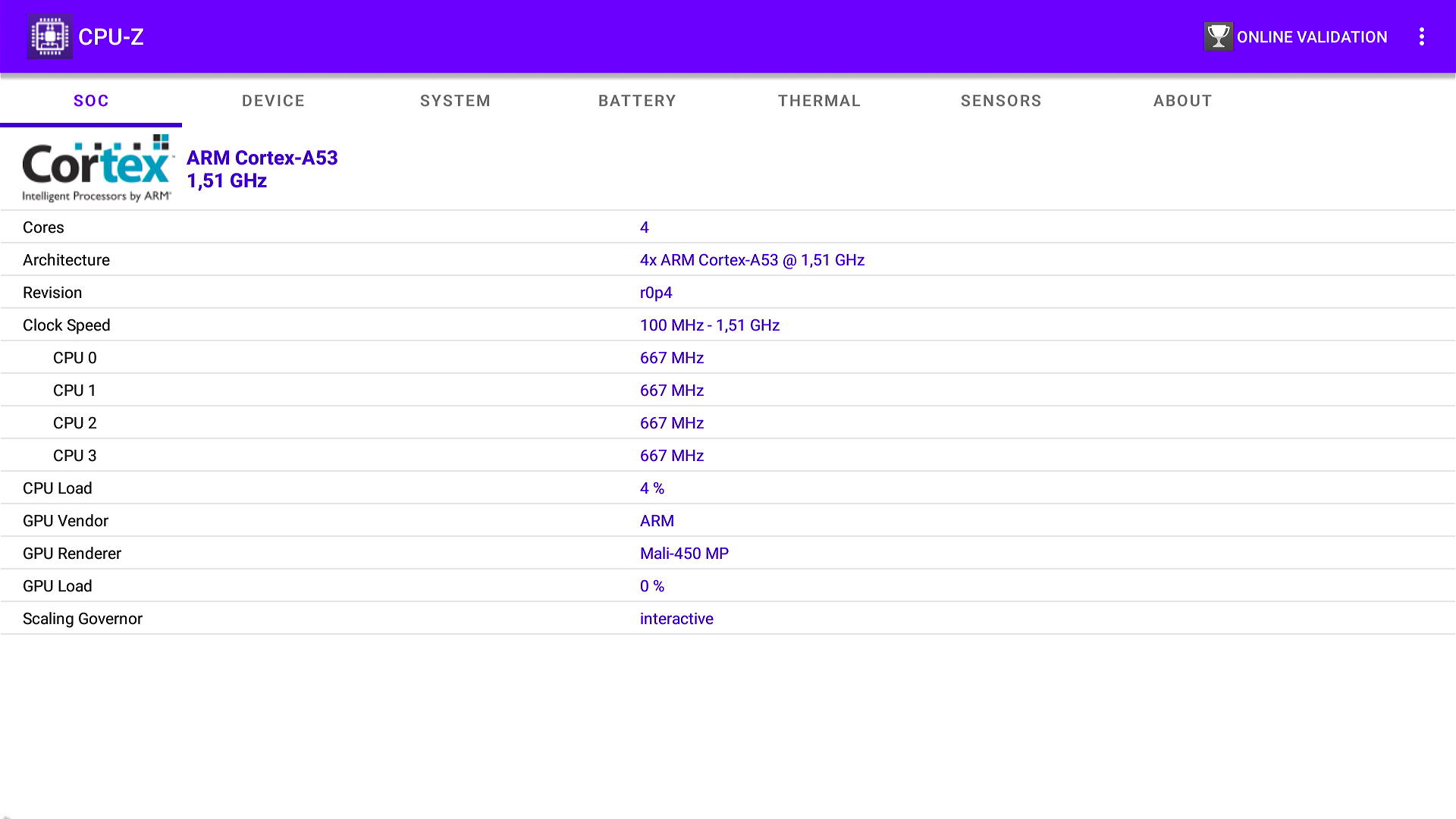Comparing: AMD E1-1200 vs Amlogic S905X-BV
In this comparison, we analyze two Processors: AMD E1-1200 and Amlogic S905X-BV, using synthetic benchmark tests to evaluate their overall performance. This side-by-side comparison helps users understand which hardware delivers better value, speed, and efficiency based on standardized testing. Whether you're building a new system or upgrading an existing one, this benchmark-driven evaluation offers valuable insights to guide your decision.

Amlogic S905X-BV
| Type: | Processors |
|---|---|
| Brand: | Amlogic |
| Model: | Amlogic S905X-BV |
Specification Comparison Table
This specification comparison presents technical details of several devices or components to help you understand the key differences between each option. Use this table as a reference to determine which device best suits your needs.
| Specification | AMD E1-1200 | Amlogic S905X-BV |
|---|---|---|
| Architecture | x86 | ARM |
| Technology | 40 nm | 28 nm |
| Clock | 1.4 GHz - - | 1.5 GHz - - |
| Core/Thread | 2 / 2 | 4 / 4 |
| Segmen | Mobile | IoT, TV, Mobile |
Submission Comparison Table
This submission comparison table displays the number and details of benchmark data submissions from various devices or components. This information helps you understand the performance based on the benchmarks that have been tested, as well as providing an overview of the consistency and popularity of the available benchmark results.
| No. | Benchmark Software | AMD E1-1200 | Amlogic S905X-BV |
|---|---|---|---|
| 1 | Geekbench3 - Multi Core |
1050 points |
1926 points |
| 2 | Geekbench3 - Single Core |
575 points |
652 points |
| 3 | Geekbench4 - Multi Core |
1240 points |
1791 points |
| 4 | Geekbench4 - Single Core |
737 points |
634 points |
| 5 | PassMark - PerformanceTest (CPU Mark) |
473 marks |
579 points |
Submission Comparison Chart
This chart visualizes the benchmark scores comparison between two hardware devices based on submitted data.
Media Gallery
A collection of photos of tested hardware. These images can help you identify the physical form, model, and variant of the hardware in question. These photos are from our own documentation, and if they are not available we may not be able to document them.
About Hardware AMD E1-1200
Released in 2012 as part of the Brazos 2.0 family, the AMD E1-1200 is a power-efficient processor aimed at entry-level laptops. It has a 2 core and 2 thread configuration with a fixed clock speed of 1.4 GHz, with no support for Turbo Core technology. Built with a 40nm fabrication process, the E1-1200 has a TDP value of 18 watts-efficient enough for portable devices that emphasize low power consumption and longer battery life. Despite its limited performance, the E1-1200 was a popular choice in its day thanks to its affordable price and ability to handle light computing needs.
One of the main advantages of the AMD E1-1200 is the integrated Radeon HD 7310 GPU, which offers better graphics performance than Intel's entry-level graphics solutions at the time. This GPU has the ability to play HD resolution videos smoothly, as well as run light games such as Counter Strike 1.6, Plants vs Zombies, or other casual games with minimum graphics settings. That said, this combination of CPU and GPU is not intended for heavy-duty work such as video editing, 3D rendering, or modern gaming. Overall performance is more optimal when used for tasks such as browsing, streaming videos, accessing social media, typing documents, as well as basic office applications.
However, it should be noted that the AMD E1-1200 is less suitable for heavy multitasking, especially in modern operating systems like Windows 10. With a low clock speed and no Boost feature, users may experience lag or limitations when opening multiple applications at once. In tests using the HP 1000 1b05au laptop, this processor was paired with 4GB DDR3 single channel RAM (2 DIMM slots) and tested on Windows 7, Windows 8, and Windows 10 operating systems. The results show that the most optimal performance is achieved on Windows 7 or Windows 8, while in Windows 10 the system tends to be slow although it can still be used for basic needs. As such, the AMD E1-1200 can still be relied upon as a power-efficient and inexpensive solution for users with very light computing needs.
Hardware Detail:
Device: HP 1000 1b05au
RAM: 4GB DDR3 Single Channel 2 DIMM
OS: Windows 7, Windows 8, Windows 10
Wednesday, 26 December 2012 14:27:36 | Update: 1 month ago
About Hardware Amlogic S905X-BV
The Amlogic S905X is a popular ARM-based System-on-Chip (SoC) designed primarily for Android TV boxes and media streaming devices. Released in 2016, this chipset offers a balance of performance and efficiency for home entertainment setups, especially for users who need affordable hardware capable of smooth video playback up to 4K resolution.
The S905X features a quad-core ARM Cortex-A53 CPU, clocked at up to 1.5 GHz, paired with a Mali-450 MP3 GPU for graphics processing. While this configuration isn’t suitable for heavy gaming or demanding multitasking, it is more than sufficient for tasks like streaming video, running lightweight Android apps, and operating smart TV interfaces.
Built using a 28nm process, the Amlogic S905X offers good thermal and power efficiency for always-on devices. One of the key strengths of the S905X is its hardware video decoding support, including H.265 (HEVC), VP9, and HDR10, making it ideal for high-resolution video playback with low CPU usage.
The chip also supports HDMI 2.0a, USB 2.0, and eMMC 5.0/5.1 storage, which are common in Android-based TV boxes. However, its performance is somewhat limited for tasks outside of video consumption, such as emulation or productivity, due to the modest clock speeds and older GPU architecture.
Hardware Detail:
Device: FiberHome HG680-P
Device Specs: Amlogic S905X, 2GB RAM, 8GB eMMC 5.1, Android 6.0.1 Custom ROM atvXperience
Wednesday, 14 June 2023 04:25:40 | Update: 1 month ago





